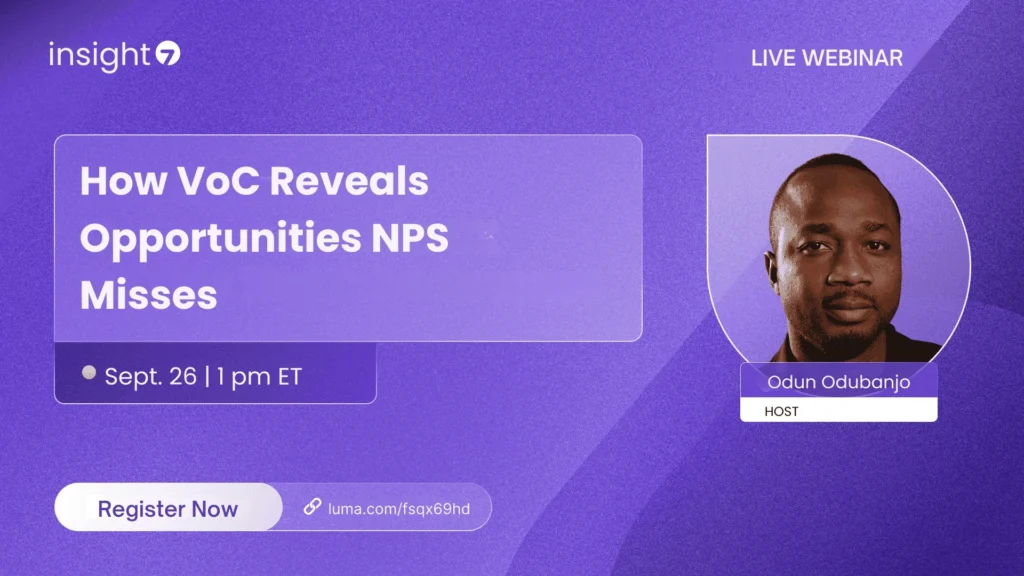How to Tag Calls for Common Friction Points Automatically
-
Bella Williams
- 10 min read
Automated Call Tagging revolutionizes how businesses assess and enhance customer interactions. Imagine sifting through hours of call recordings to pinpoint specific issues—now envision a system that automatically tags these calls based on keywords relevant to common friction points. This technology not only saves time but ensures that critical conversations aren't overlooked in the compliance process.
By identifying keywords and contextual cues, Automated Call Tagging enables teams to focus on areas that need improvement. A well-implemented tagging system can streamline quality assurance, highlight training needs, and bolster compliance monitoring. As businesses increasingly prioritize customer experience, understanding how to tag calls effectively becomes essential for fostering stronger client relationships and driving growth.
Analyze & Evaluate Calls. At Scale.

Understanding Automated Call Tagging Systems
Automated Call Tagging systems revolutionize how businesses manage customer interactions. By harnessing advanced algorithms and artificial intelligence, these systems analyze phone calls in real-time, identifying key themes and trends. This capability allows organizations to automatically assign tags to calls based on common friction points, helping teams understand customer needs more effectively.
The process begins with integrating the automated tagging system into existing communication platforms. Once set up, the system analyzes conversations, capturing customer sentiment and identifying frequent questions or concerns. The real-time tagging provides insights that guide customer service representatives, ensuring they can address issues promptly. Ultimately, Automated Call Tagging not only enhances operational efficiency but also contributes to improved customer satisfaction by rapidly aligning responses with customer expectations.
Key Features of Automated Call Tagging
Automated Call Tagging enhances the efficiency of handling customer interactions by systematically categorizing calls based on specific criteria. One standout feature is its ability to analyze caller behavior and sentiment. This analysis captures essential details such as tone, demeanor, and urgency, providing valuable insights into customer experiences and friction points.
Another key feature is the flexibility to define tagging criteria, enabling businesses to track various topics and outcomes effectively. For instance, companies can configure tags for specific services, like air conditioner repairs or appointment bookings. This targeted approach allows businesses to identify trends and areas for improvement. Additionally, automated systems can generate reports to assess the success of call outcomes, helping organizations refine their strategies over time. Together, these features create a comprehensive framework that supports better customer service delivery and enhances overall operational efficiency.
Benefits of Automated Call Tagging for Businesses
Automated call tagging is a transformative tool for businesses aiming to streamline their customer interactions. One significant benefit is the ability to rapidly identify and address common friction points during calls. By automating this process, businesses can minimize human error, ensuring important issues are flagged promptly and accurately.
Another advantage is the wealth of data generated from these tagged calls. With patterns in customer complaints and preferences easily accessible, businesses can tailor their training and operational strategies accordingly. This not only enhances compliance with industry standards but also improves overall customer satisfaction.
Additionally, automated call tagging allows for efficient monitoring of sales conversations, enabling teams to quickly identify training needs. As a result, organizations can continuously improve their service quality and ultimately boost their bottom line. By harnessing the power of automated call tagging, businesses can better navigate the complexities of customer relations.
Extract insights from interviews, calls, surveys and reviews for insights in minutes
Implementing Automated Call Tagging to Address Friction Points
Automated Call Tagging serves as an invaluable tool for identifying and addressing friction points within customer interactions. To implement this system effectively, organizations need to establish a clear understanding of the common friction points they encounter. This could involve analyzing call recordings to identify trends or recurring issues that both employees and customers face. By pinpointing these areas, organizations can create a targeted approach to call tagging, which streamlines the process of tagging calls based on specific criteria.
Next, setting up automated tagging criteria is crucial. This means defining the keywords, phrases, or topics that will trigger a tag during a call. Integrating automated call tagging with existing systems ensures a smooth flow of information and enhances overall efficiency. By effectively implementing automated call tagging, businesses can easily monitor interactions, improve training processes, and ultimately enhance customer satisfaction.
Step-by-Step Guide to Automating Call Tagging
Automated Call Tagging streamlines the process of categorizing phone conversations, making it easier to identify and address customer friction points effectively. To begin automating your call tagging, follow these essential steps. First, identify common friction points your customers experience during calls. This can include issues like long wait times, unclear product information, or barriers to purchase. By pinpointing these areas, you can create a targeted strategy for tag implementation.
Next, establish the criteria for your automated tagging system. Define specific keywords or phrases that signal these friction points. An efficient approach involves integrating your automated tagging solution with existing systems to ensure seamless functionality. Through proper implementation, you will enhance your ability to monitor and analyze customer interactions, ultimately leading to improved satisfaction and compliance with company standards. By following these steps, your organization can facilitate a more effective and responsive customer service experience.
Step 1: Identifying Common Friction Points
To effectively enhance customer interactions, the first step involves identifying common friction points within calls. Understanding where customers face challenges is crucial for developing an automated call tagging system. Begin by analyzing call transcripts to uncover recurring themes and patterns. This initial examination provides valuable insights into the specific issues customers encounter during their interactions.
Next, categorize these friction points based on their frequency and impact on customer satisfaction. Focus on the most mentioned concerns, as these often highlight areas that require immediate attention. Documenting these common pain points allows for more targeted automated tagging strategies that streamline the identification process in future calls. By establishing a clear understanding of customer frustrations, businesses can ensure their automated call tagging system is effectively designed to address these specific concerns, ultimately leading to improved customer experience and satisfaction.
Step 2: Setting Up Automated Tagging criteria
To effectively set up Automated Call Tagging criteria, begin by defining the specific friction points that you want to address. Consider the common issues experienced by customers, such as misunderstandings or delays in resolving their concerns. Each of these points will serve as a basis for your tagging criteria, allowing for a more focused analysis of calls.
Next, create clear and concise criteria for each identified friction point. For instance, evaluate whether agents took the time to understand the customer's problem or how effectively they managed the resolution process. This structured approach not only helps identify areas needing improvement but also assigns weighted scores to various criteria. By regularly updating and refining these criteria based on team learning, you'll continuously enhance the quality of your automated tagging system. This proactive strategy ensures that your tagging remains relevant and effective in improving customer interactions.
Step 3: Integrating with Existing Systems
Integrating with existing systems is a crucial aspect of implementing automated call tagging. To ensure a seamless transition, start by assessing the compatibility of your current systems with automated call tagging solutions. This initial evaluation helps you identify any gaps or challenges that may arise during integration.
Next, collaborate with your IT team to outline the necessary steps for this integration. This may involve utilizing APIs or middleware to connect different software solutions. Proper integration allows for streamlined data flow, making it easier to tag calls based on predefined friction points automatically. Ultimately, an effective integration will enhance your operational efficiency while improving the accuracy of the automated call tagging process. By focusing on these key aspects, businesses can achieve a smoother implementation of their automated call tagging efforts.
In summary, the integration process involves assessing system compatibility, collaborating with IT, and ensuring seamless data flow. By following this approach, you can enhance your customer insights and address common friction points effectively.
Case Studies of Successful Implementations
Successful implementations of automated call tagging have shown transformative results for businesses facing common friction points. One noteworthy example involves a company that utilized an automated tagging system to monitor customer service interactions. By accurately identifying friction points, they could tailor their training and improve their service protocols significantly. This direct feedback loop allowed them to adjust their offerings based on real customer insights.
Another compelling case involved a business that integrated call tagging with marketing strategies. By analyzing tagged calls, they discovered specific customer requests leading to content updates on their website. This synergy between customer service data and marketing efforts facilitated a more responsive customer experience, ultimately enhancing satisfaction and loyalty. These case studies illustrate the potential of automated call tagging to provide actionable insights that drive continuous improvement across various departments within an organization.
Top Tools for Automated Call Tagging
Automated Call Tagging has emerged as a vital tool for businesses striving to streamline their customer service interactions. This technology empowers organizations to flag and categorize call recordings based on predefined keywords, enabling rapid identification of potential friction points. By employing advanced algorithms and machine learning, these tools ensure that calls are analyzed efficiently, allowing teams to focus on compliance and improvement without manually sifting through hours of audio.
Among the top tools available, Insight7 stands out for its user-friendly interface and robust analytics capabilities. CallRail excels in its integration potential with existing systems, making it a favorite among businesses seeking seamless solutions. Aircall offers real-time tagging features, which enhance responsiveness during calls. Additionally, Talkdesk provides customizable options tailored to specific industry needs, while Zendesk integrates well with customer support workflows. Each of these tools brings unique strengths and capabilities, making them essential in the landscape of automated call tagging.
Tool 1: Insight7
Insight7 stands out as a powerful tool for automating the call tagging process. This platform allows businesses to analyze customer conversations efficiently, transforming speech into actionable insights. By utilizing advanced algorithms, Insight7 improves the speed and accuracy at which common friction points are identified. Companies are increasingly overwhelmed by the volume of customer interactions, and Insight7 simplifies this challenge through automation, enabling organizations to stay ahead in their respective markets.
The platform offers intuitive features that streamline tagging and analysis. Users can easily categorize conversations based on specific triggers that reflect customer needs and frustrations. This not only saves time but also enhances collaboration among teams by consolidating insights in one accessible space. Through Insight7, businesses can swiftly translate customer feedback into strategies, ensuring a more responsive approach to their service offerings. By implementing automated call tagging effectively, organizations can significantly improve their operational efficiency and customer satisfaction.
Tool 2: CallRail
CallRail offers an efficient solution for businesses aiming to improve their customer interactions through Automated Call Tagging. This tool simplifies the process of analyzing customer calls to identify common friction points. By capturing important customer insights from conversations, businesses can quickly pinpoint areas needing improvement, enhancing overall service quality.
The system allows users to upload and transcribe calls while automatically generating insightful reports. Users can analyze these conversations to uncover pain points, desires, and customer behaviors. By gathering data on customer feedback, businesses can adapt their strategies to meet evolving needs effectively. CallRail's user-friendly interface eliminates the need for specialized training, enabling anyone in the company to easily access and utilize the platform's features for optimal decision-making. Deploying this tool can lead to actionable insights that foster a better customer experience and drive business growth.
Tool 3: Aircall
In the realm of automated call tagging, Aircall stands out as a robust tool designed to simplify the identification of common friction points in customer interactions. This platform allows businesses to easily tag calls based on pre-defined criteria, streamlining the process of analyzing customer feedback. By offering a user-friendly interface, Aircall enables team members, regardless of technical expertise, to access and utilize insights effectively.
The core advantage of using Aircall lies in its ability to collect and analyze data from multiple calls at once, facilitating a comprehensive overview of customer sentiments. Through the automated tagging feature, businesses can swiftly pinpoint pain points and desires expressed during calls. This not only accelerates problem-solving but also fosters a deeper understanding of customer needs, ultimately enhancing overall satisfaction and loyalty. By integrating Aircall into your operations, you can elevate your team's ability to capture and act upon key insights.
Tool 4: Talkdesk
Talkdesk provides a user-friendly solution for automated call tagging, making it easier for businesses to address customer friction points. The platform allows users to quickly access and analyze call data without needing extensive training. With its intuitive interface, anyone within an organization can effectively harness this tool to enhance insights.
One of the key features is the library where all calls are stored. Users can easily view transcripts and visualize conversations to identify recurring pain points. Additionally, the platform automatically extracts critical insights, such as customer behavior and feedback. This capability ensures that organizations can systematically address issues and improve the overall customer experience while promoting informed decision-making through analyzed data. By utilizing automated call tagging, businesses can transform customer interactions into actionable insights that drive growth and satisfaction.
Tool 5: Zendesk
Zendesk offers a robust platform to enhance your approach to automated call tagging for identifying common friction points. This tool simplifies the process of organizing and analyzing calls, allowing your team to focus on improving customer interactions. With an intuitive interface, anyone in your organization can easily access and utilize its features without intricate training.
When using Zendesk for automated call tagging, the first priority is setting up criteria that accurately pinpoint friction points. This will ensure that relevant tags are applied consistently across calls, helping to identify patterns and trends in customer feedback. The ability to visually analyze call transcripts aids in quickly extracting valuable insights, making it an excellent choice for businesses looking to enhance their customer service. Through the efficient categorization of conversations, Zendesk helps businesses address pain points effectively, ultimately leading to a better customer experience.
Conclusion: Enhancing Customer Experience with Automated Call Tagging
In conclusion, enhancing customer experience through automated call tagging offers a transformative solution for businesses aiming to streamline their interactions. By automatically identifying and tagging common friction points, organizations can gain valuable insights into customer concerns and improve service delivery. This shift not only saves time previously spent on manual evaluations but also allows for more targeted training of customer service representatives.
Moreover, adopting automated call tagging can lead to a more personalized customer experience. As data reveals patterns in customer inquiries and behaviors, businesses can adapt their strategies accordingly. Ultimately, the implementation of automated call tagging is a step towards building stronger customer relationships and fostering loyalty through efficient, informed, and responsive service.







